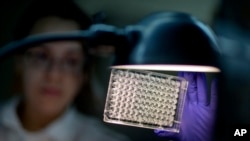Antibiotic resistance has made infections hard to fight, even life-threatening in many cases. Scientists in Sweden, however, may have found an alternative to using antibiotics.
In a mouse model, the scientists trained the body’s natural immune system, called innate immunity, to disarm and destroy a bacterium that causes a kidney infection, often in children.
The innate immune system is the front line of the body's defenses, and it works in two different ways to fight infections.
The first is what researchers call a "good antibacterial defense" that targets and kills the invading pathogen. The second causes inflammation — the redness, swelling and fever that accompany an illness or injury. It's a vital part of the immune response but also can cause significant tissue damage, and in some cases it can contribute to the progress of the disease or infection.
"So the question has been: Can you find a way of treating infections by stopping the bad part of the immune defense and still keep the antibacterial defense?" said Catharina Svanborg, a professor of clinical immunology at Lund University in Sweden. "This is what we have done in our model.”
Flipping a switch
Svanborg and her fellow researchers found that the two parts of the process are controlled by two different molecules, so they just turned off the inflammation molecule. By blocking it, they found they could take advantage of the part of natural immune defense that promotes healing.
“It is a surprise because this technology has not been used in this way to treat infections," she said. "So, it was an unexpected finding ... but it was a logical step to take."
Svanborg and her colleagues published their findings in the journal Science Translational Medicine.
She said investigators are planning more tests, this time to see whether the innate immune system can take on other pathogens, such as those that cause pneumonia.
“The picture is the same for all these different categories, and conceptually, what we’ve done is to say: Instead of killing the bacteria directly, we are harnessing the immune system in such a way that the tissue damage is suppressed and the symptoms are suppressed,” Svanborg said.
Given the growing seriousness of bacterial infections that don’t respond to antibiotics, Svanborg thinks it’s only a matter of time before some illnesses are treated using the immune system alone.












